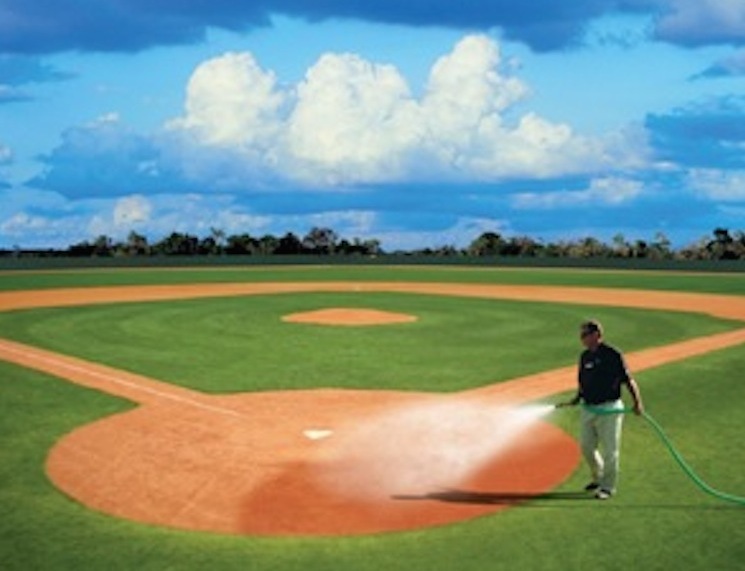Having an effective irrigation schedule established is not only useful to help manage water and pumping costs, but also to help reduce disease, fertilizer use, runoff, and erosion. An effective schedule contributes to healthier turf and vibrant plants and groundcovers. The creation of irrigation schedules have matured in many ways from the old methods of arbitrary runtimes for spray and rotor zones, to utilizing full water audits, soil analysis, and daily, automatic sprinkler run time adjustment for evapotranspiration rates calculated by on-site weather stations.
Among the variety of solutions for irrigation scheduling are “smart controllers” offered by many manufactures that can help assist with daily irrigation scheduling adjustments. Smart controllers are irrigation controllers that have the ability to adjust the daily irrigation run times based on the weather conditions. These smart product offerings vary greatly in cost and complexity.
Some manufacturers offer simple and cost-effective add-on weather sensors that provide true onsite weather data that may be compatible with existing field controllers. Other more complex solutions may require existing field controllers to be replaced and add monthly subscription costs to supply the daily weather information from remote weather stations to the site. One of the widening trends with smart controllers is the ability to tie into a web-based environment, which brings a new level of control and alerts directly to managers’ mobile phones. A key consideration should be that all weather-based controllers often need significant initial observation and adjustment before optimal performance is achieved.
Regardless of any technologies being employed, it is important to note that having an efficient system is paramount to effectively utilizing your limited water resources. It is a good idea, especially on older systems, to perform a water audit of the system or at the very least a tune up before addressing scheduling concerns. During a site inspection the system should be checked for damaged and leaking heads and to ensure heads are level and unobstructed. At this time, the pressure should also be checked at the nozzle to verify the optimum manufacturer pressure recommendations are met. If the pressure is too high, pressure regulation at the valve should be considered since high pressure can hamper efficiency just as badly as low pressure. If low pressure is observed refer to manufacturers’ nozzle data. Often, smaller nozzles can be utilized to help reduce flow as well as restore pressure and nozzle efficiency to the system.
An irrigation schedule should be created for each month of the growing season. This will serve as a base schedule that will typically require only minor adjustments with the exception of extreme weather events like prolonged rain or above average heat. The first step in this process is to collect historic or average evapotranspiration rates for the local area. Evapotranspiration is the measured combined loss of water from soils by evaporation and plant transpiration. This data can often be accessed through a water purveyor website or by an Internet search for the best available local source. Once this data is gathered, you can derive how many inches of irrigation water is needed by plant type. The irrigation schedule would then be built to replace this lost moisture.
An additional consideration of the efficiency of the irrigation system components also plays a role. Since no irrigation system is 100% efficient, additional irrigation will need to be applied to compensate for the difference between the plants’ needs and the ability of the irrigation equipment to apply the water. Generally, rotary sprinklers range in efficiencies from excellent at 80% or higher, to a general average in the 70% range. Traditional spray sprinklers tend to be less efficient than rotary with the high range being 60% and an average around 50%. However, new spray head technology exists with rotator type nozzles that can easily bring the traditional type spray systems in to the 80% efficiency range by converting nozzles. Systems with pressure, flow, and maintenance issues can fall well below these averages.
As you prepare for your upcoming growing season, assess and repair the irrigation system at spring start up and generate an expected monthly irrigation schedule based on your local evapotranspiration rates. If your budget allows, strong consideration should be made for employing irrigation system audits and new technologies like smart controllers to help achieve optimum water savings.
Troy Leezy, CID, CWCM, CLIA, is Regional Sales Manager – Southwest/Mountain States, for Hunter Industries and has more than 33 years of irrigation industry experience.


